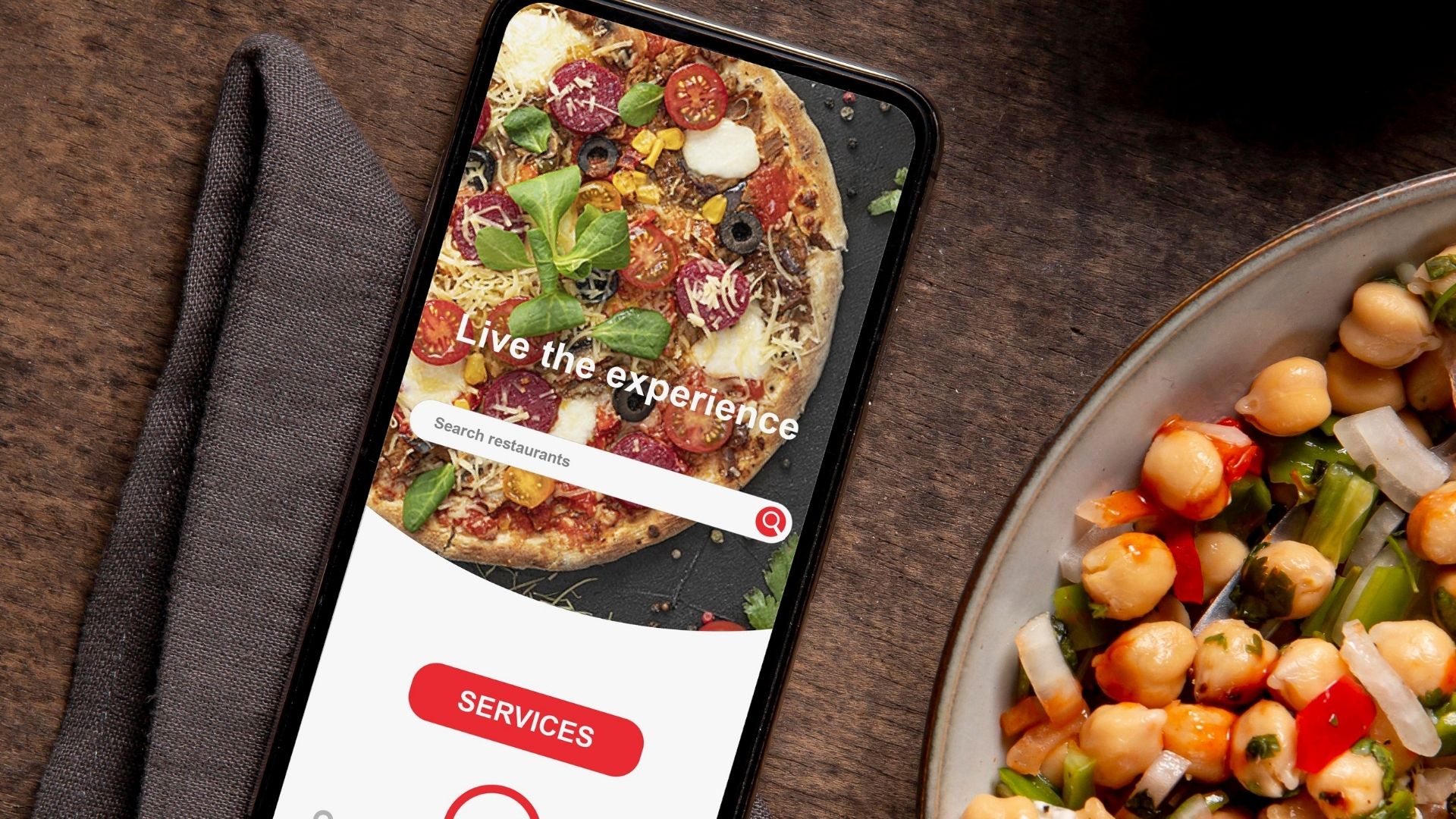November 7, 2025
.jpg)
Running a successful restaurant today takes more than great food and friendly service. It takes smart tools that help you stay organized, save time, and keep customers coming back.
That’s where restaurant apps come in. They are helping owners cut costs, understand what customers really want, and run their businesses from anywhere. Whether you’re running a cozy café or a busy chain, there’s an app out there to make your life easier.
This blog covers the top 15 restaurant apps that simplify operations, boost customer engagement, and help owners run smarter, more efficient businesses in 2025.
At a Glance:
In today’s digital-first dining world, customers often discover, compare, and even judge a restaurant before ever stepping through the door. That’s why being visible across the right platforms isn’t optional anymore.

Listing your restaurant on popular apps and directories can make the difference between being fully booked and barely noticed.
Here’s why it matters:
Simply put, visibility drives opportunity. Restaurants that embrace digital platforms not only attract more customers but also build stronger, more recognizable brands in their communities.
Also Read: Why Your Restaurant Needs a Native Mobile App for Online Ordering?
From managing orders and reservations to handling marketing, inventory, and staff, restaurant apps have become the digital backbone of modern hospitality. The right tools can simplify operations, improve guest experiences, and help owners make data-driven decisions every single day.
This guide highlights 15 of the best restaurant apps for business owners in 2025, starting with iOrders White-Label App, and explores how each one helps restaurants stay competitive, organized, and connected in a fast-changing industry:
The iOrders White-Label App empowers restaurants to take back control of their online presence, with no commissions and no middlemen. It gives businesses a fully branded ordering experience with features like loyalty rewards, AI-powered reviews, and integrated marketing campaigns.
With real-time analytics, restaurants can track sales, understand customers, and grow repeat orders directly from their own app and website.
Key features:
Best for: Restaurants that want to own their brand, customers, and data, all without third-party fees.
Square for Restaurants remains a go-to solution for payment processing and POS management. It simplifies daily operations by combining payments, orders, and staff management into one system. Its flexibility makes it ideal for both small cafes and multi-location restaurants.
Key features:
Best for: Restaurants that want an all-in-one POS and payment ecosystem.
7shifts is the ultimate scheduling app for restaurants. It replaces spreadsheets with smart scheduling, labor cost tracking, and team communication, saving managers hours each week. Employees can request swaps or time off right from their phones.
Key features:
Best for: Restaurants that want to simplify scheduling and improve staff communication.
Also Read: Native vs Cross-Platform Apps: Which One Should You Choose?
UpMenu helps restaurants manage online ordering, reservations, and customer loyalty from one simple platform. It allows restaurants to build branded websites and mobile apps without coding, while also handling menu updates, promotions, and delivery integrations.
Key features:
Best for: Restaurants that want a complete digital ordering and loyalty system with easy customization.
OpenTable helps restaurants manage reservations and fill seats more efficiently. Guests can book directly through Google, social media, or the OpenTable app, while restaurants get data on guest preferences and booking trends.
Key features:
Best for: Restaurants that rely on reservations and want deeper insights into guest habits.
BlueCart streamlines ordering and inventory management by connecting restaurants directly with their suppliers. It simplifies replenishment and prevents costly overstocking or shortages.
Key features:
Best for: Restaurants looking for a faster, digital way to manage supply orders.
Also Read: What is a POS System for Restaurants? Do You Really Need One?
For restaurants active on social media, Hootsuite is a must-have. It allows you to plan, schedule, and monitor posts across all major platforms from one dashboard, ideal for keeping your marketing consistent and timely.
Key features:
Best for: Restaurants that want a consistent online presence without daily effort.
Keeping track of inventory can be one of the toughest parts of running a restaurant. Sortly makes it visual and easy. You can scan items, attach photos, and track everything from ingredients to equipment.
Key features:
Best for: Restaurants needing an intuitive way to monitor stock levels.
Owner.com gives restaurants control over their digital ordering experience. It combines a branded website, loyalty system, and marketing automation to help drive repeat business, without third-party delivery cuts.
Key features:
Best for: Restaurants looking to grow direct sales and strengthen customer relationships.
Also Read: A Simple Guide to Restaurant App Development in 2025
A motivated team is key to great service, and Bonusly helps you celebrate wins that often go unnoticed. Employees can give each other recognition points, which can be redeemed for rewards, boosting morale and teamwork.
Key features:
Best for: Restaurants focused on building a positive and motivated workplace.
Keeping up with restaurant trends is easier with Feedly, a smart content reader that curates industry news, recipes, and insights from top sources. It’s a quick way for owners to stay inspired and ahead of the curve.
Key features:
Best for: Restaurateurs who like staying informed and inspired.
From vendor contacts to menu ideas, Evernote helps restaurant owners stay organized. Notes sync across devices, making it easy to keep track of meetings, recipes, and plans on the go.
Key features:
Best for: Owners who want to organize everything from kitchen notes to contracts digitally.
Also Read: How to Make a Small Restaurant Grow: Top 33 Tips
Partender simplifies bar inventory by letting staff track bottle levels with quick visual input. The app automatically calculates usage and helps optimize reorders, saving time and reducing waste.
Key features:
Best for: Bars and restaurants aiming to improve beverage cost control.
BevSpot brings food and beverage management together. It helps track ingredient costs, manage supplier orders, and analyze profitability, all from one platform.
Key features:
Best for: Restaurants that want accurate food cost tracking and smarter purchasing.
Managing multiple delivery apps can get messy. Chowly integrates platforms like Uber Eats, DoorDash, and Grubhub directly into your POS. No more manual entry or missed orders.
Key features:
Best for: Restaurants juggling multiple delivery services that need smoother order management.
With platforms like iOrders, restaurants can go beyond third-party dependence and take ownership of their brand, customer data, and profits. The future of restaurant management is digital, and it’s designed to make every part of running a restaurant simpler, sharper, and more profitable.
Also Read: Hire and Retain Restaurant Employees: Top 12 Strategies
With hundreds of restaurant apps out there, it’s easy to feel overwhelmed by the options. But not every app will fit your restaurant’s goals, workflow, or budget.

Before you download or subscribe, here are a few key things to keep in mind:
Apps like iOrders, for example, are designed to give restaurants full ownership of their customer data.
Also Read: How to Start and Run a Successful Restaurant in 10 Simple Steps
Running a restaurant in 2025 is about understanding your customers, building loyalty, and owning your digital presence. That’s exactly where iOrders stands out.

Instead of juggling multiple platforms for online ordering, marketing, and analytics, iOrders brings everything together under one easy-to-manage system. It helps restaurants move beyond third-party dependency and take control of their brand, customer relationships, and data, all while keeping more of every sale.
1. Commission-free online ordering and branded presence: With iOrders, restaurants can launch their own branded website and white-label mobile app, giving customers a direct way to order without costly third-party fees. Every order you receive stays 100% yours, no commissions, no hidden charges, and complete ownership of your customer data.
2. Real-time menu and pricing control: Easily update your menu, prices, and availability across all channels from a single dashboard. Whether you’re promoting seasonal specials or adjusting prices during busy hours, iOrders ensures customers always see accurate, up-to-date information, helping you boost sales and minimize waste.
3. Actionable insights that drive growth: iOrders isn’t just an ordering system, it’s a data engine. Its built-in analytics highlight best-selling dishes, peak ordering times, and returning customer trends, giving you the insights you need to run smarter promotions and optimize menu performance.
4. Loyalty and retention built in: Turn first-time visitors into repeat customers with integrated loyalty programs and automated marketing campaigns. iOrders makes it easy to reward frequent diners, track engagement, and send personalized offers that keep them coming back.
5. One platform, endless efficiency: From analytics to marketing to customer engagement, iOrders unifies every part of your restaurant’s digital operations. That means less time switching between tools and more time focusing on what you do best, serving great food and growing your business.
For restaurant owners who want to cut commissions, strengthen their brand, and make decisions backed by real data, iOrders is more than an ordering tool, it’s the foundation of smarter, more sustainable restaurant growth.
Also Read: 7 Effective Fast Food Advertising Strategies to Boost Your Restaurant’s Reach
Between managing staff, handling reservations, updating menus, and promoting online, running a restaurant in 2025 can feel like juggling a dozen apps and platforms just to stay competitive. The challenge isn’t finding tools, it’s finding ones that actually work together to save time and improve profitability.
That’s exactly where iOrders fits in. By combining commission-free online ordering, menu management, analytics, and loyalty programs in one place, iOrders gives restaurant owners a single platform to manage operations and make smarter business decisions backed by real data, no extra subscriptions or third-party fees required.
Book a free demo with iOrders today to see how one platform can simplify your restaurant’s operations and turn everyday insights into lasting growth.
1. How can a restaurant app leverage user data to personalize the customer experience?
A restaurant app can collect and analyze ordering habits, preferred cuisines, frequency, and spending patterns to provide tailored menu recommendations, relevant offers, and custom notifications, resulting in higher conversion and customer satisfaction.
2. What features can boost app-only loyalty compared to third-party platforms?
App-exclusive loyalty programs might offer points for every order, birthday treats, referral rewards, early access to new menu launches, and app-only discounts, motivating customers to order directly and maximize retention.
3. How does app store optimization (ASO) impact restaurant app downloads and growth?
Crafting keyword-rich app titles, writing compelling descriptions, adding demo videos and screenshots, and pushing in-app review prompts can substantially increase your app’s visibility and drive more downloads—and apps with higher ratings see significantly better conversion rates.
4. What strategies increase app engagement and reorders from users?
Push notifications about new menu items, abandoned cart reminders, exclusive flash sales, and timely meal suggestions (like lunch/dinner specials) engage users and trigger repeat orders through the app.
5. How can a restaurant app integrate seamlessly with in-house operations for better service?
Integrating your app with POS, kitchen management, and inventory systems streamlines order processing, reduces errors, and ensures up-to-date menu offerings and order tracking, which translates to a smoother customer and staff experience.
6. How should restaurants promote their apps using digital performance marketing?
Geo-targeted Google Search Ads, retargeting on social platforms, YouTube awareness videos, and incentivized installs during local events are effective ways to increase both downloads and active users, especially when segmenting by time, region, and behavior.
7. How can a restaurant app encourage user-generated content and community engagement?
Apps can incentivize customers to post meal photos, leave ratings or reviews, and share orders on social media with branded hashtags, rewarding this activity with discounts or loyalty points and featuring the best user content to create an engaged digital fan base.